 Here’s what went into our INBs for the 1st unit of Algebra 1:
Here’s what went into our INBs for the 1st unit of Algebra 1:
Day 1:
We glued in a reference sheet for the real number system. Our textbook uses I for the set of irrational numbers. I went with the same notation this year, but I think I’m going to go with R-Q for next year, since I is used for imaginary numbers, later on. 
To practice working with these definitions, we did a real number system sort, which I found from Amazing Mathematics! My students enjoyed doing it, and it spawned many great conversations about the difference (however subtle they may be), between the sets of real numbers.

For homework, students did this Always/Sometimes/Never sort, which is also from Amazing Mathematics. They were given about 20 minutes in class to begin their assignment, and then had whatever was left as their take-home assignment for the night. This one was even better than the last card sort, in terms of spurring student conversations. Students were justifying with counterexamples and providing fully flushed out reasons for where each card should get placed. It was awesome!

As a note, we also keep a binder for the class which holds extra handouts, like additional reference sheets and homework assignments that don’t go in the INB. My favorite reference sheet that didn’t go into the INB was this real numbers flowchart that I made. The day of teaching my lesson on real numbers, I noticed that using the “Venn diagram” approach wasn’t meshing well with some of my students. That afternoon, I went home and made a flowchart handout that they could refer to, in addition to their INB pages. Next year, I think I’ll just use this flowcharts in a mini-book format for notes, instead! I found that students started making more connections about the sets each number belongs to (i.e. not only is a number natural, but it’s a whole number, and an integer, and a rational number), and students were able to remember the questions they need to ask themselves when determining the best classification for a real number.

Day 2:
We started off with a recap warm-up on the real number system, which we covered the day before. 
From there, we did a translating expressions sort, also from Amazing Mathematics. (Can you tell I love her sorts?!).
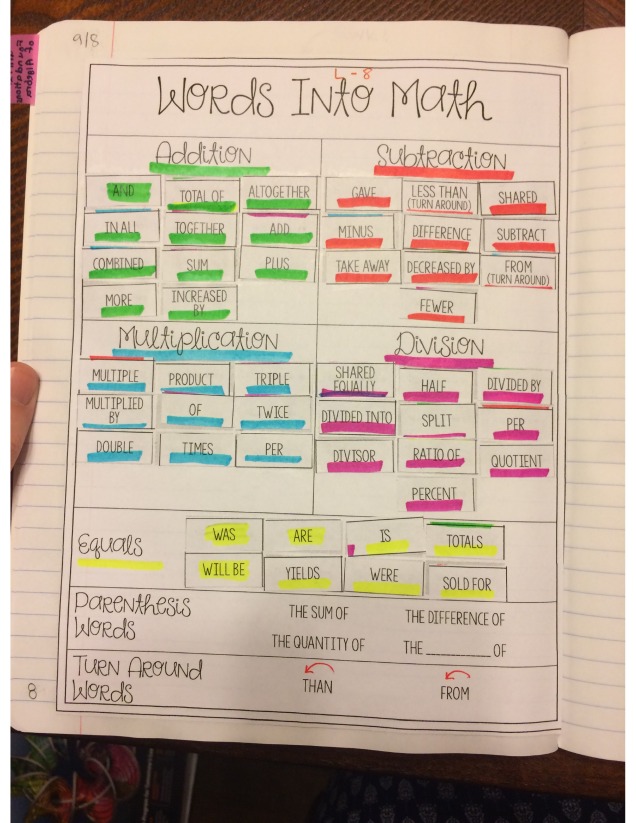
From there, we used our key words and started defining what a variable is, and what an expression is. 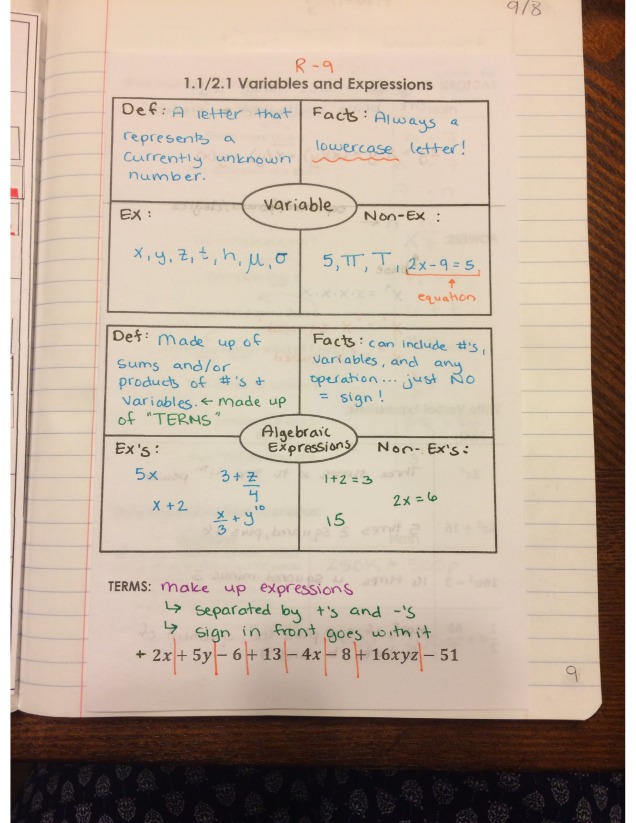
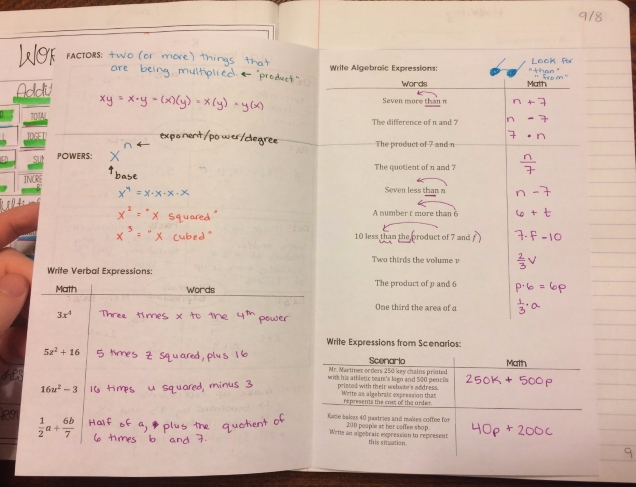
For homework, students did the following problems. They had about 15 minutes of class time to get started. We color-coded “turn-around words” in pink, “parentheses-words” in green, and “equals words” in blue. Students marked the page in highlighter before beginning to translate the expressions. They mentioned that this made the process much easier for them! 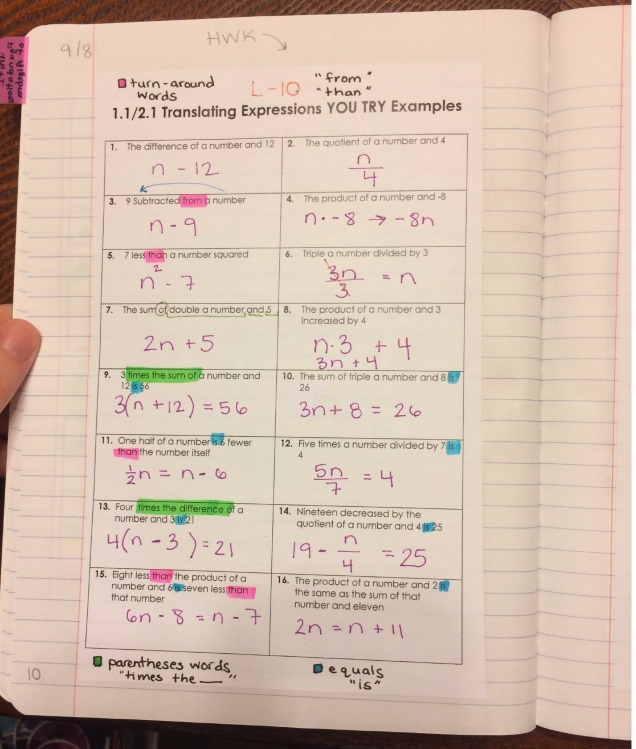
Day 3:
We began with a recap warm-up over translating expressions.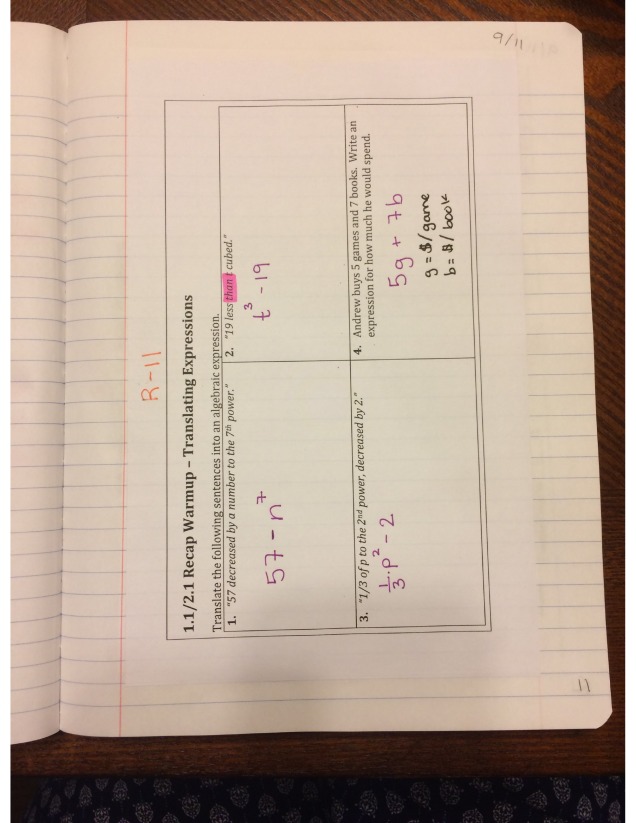
From there, we talked about evaluating expressions and also reviewed the order of operations.
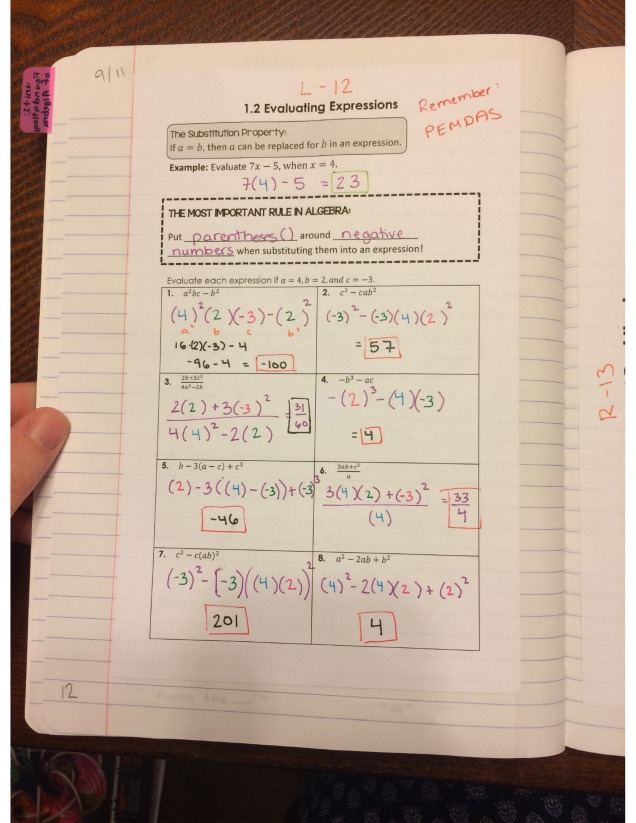
From there, we discussed the properties of real numbers and students made up their own examples for each property. 
For in-class practice, students did the a properties of real numbers puzzle from Lisa Davenport. A student volunteered to glue it into my notebook. Notice the lack of glue? Notice the crooked edges? It was a very sweet offer, but I’m I don’t think it’s one I’ll be taking again any time soon. 
Day 4:
We started with a recap warm-up over evaluating expressions and identifying properties of real numbers. 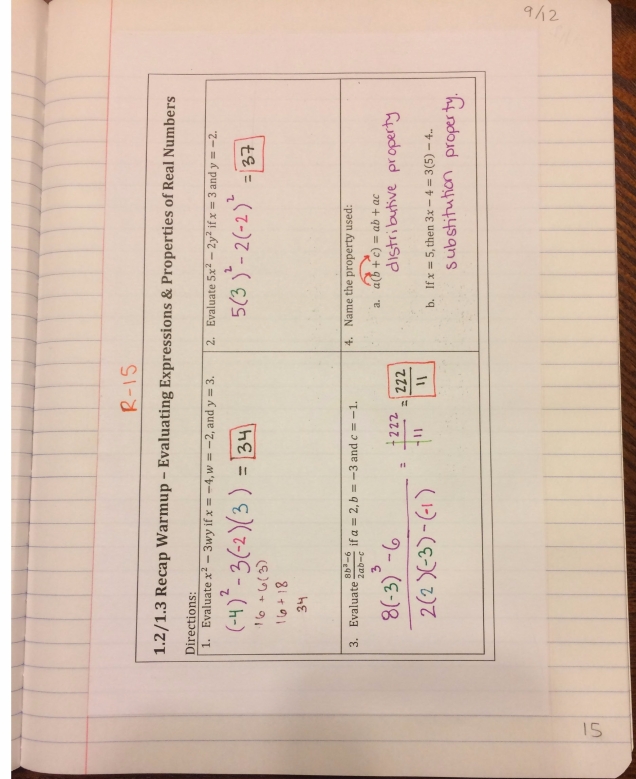
Next we took notes on combining like terms and the distributive property, cutesy of Sarah at Math Equals Love.


Day 5:
Recap warm-up over distributing and combining like terms. 
What is a solution? What does it mean to be a solution? What does it look like? 
Up next, we focused on solving and verifying solutions to 1-step and 2-step equations. I’ve found that verifying a solution is a skill that students struggle with more than solving (at least in Algebra 1), so I wanted to make sure it got emphasized. 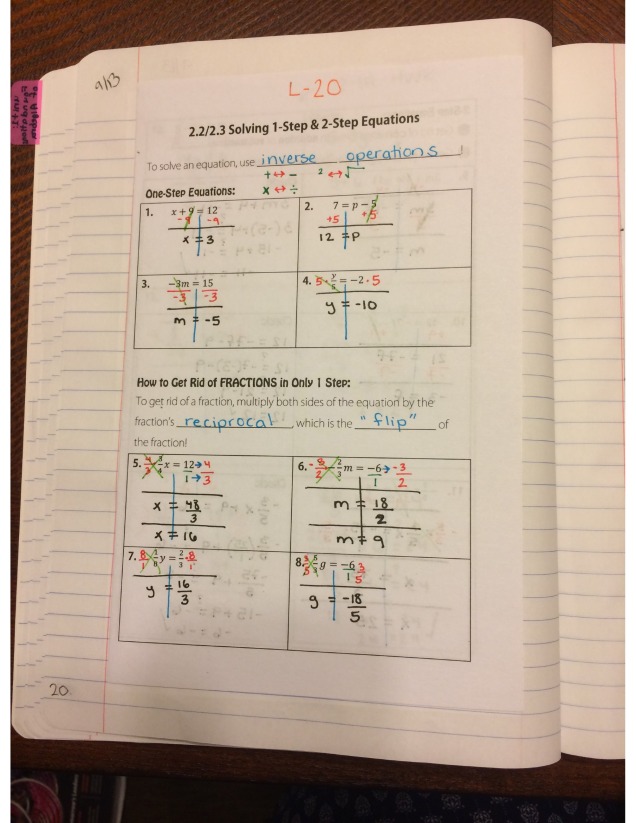
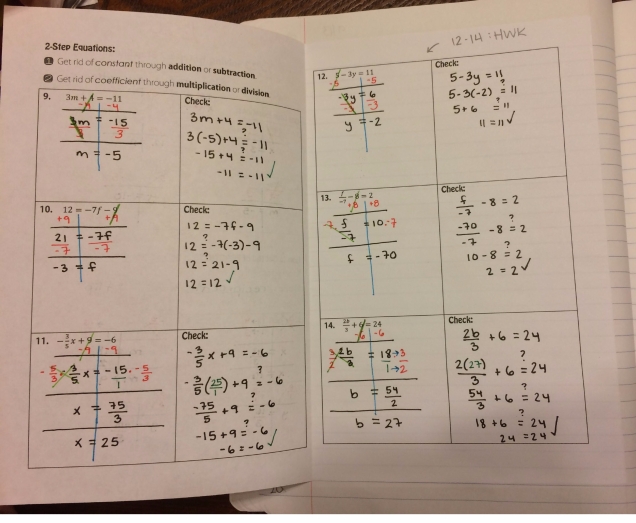
Day 6:
We filled out a foldable for solving 2-step equations. Those pesky fractions are going to be our friends by the end of today!
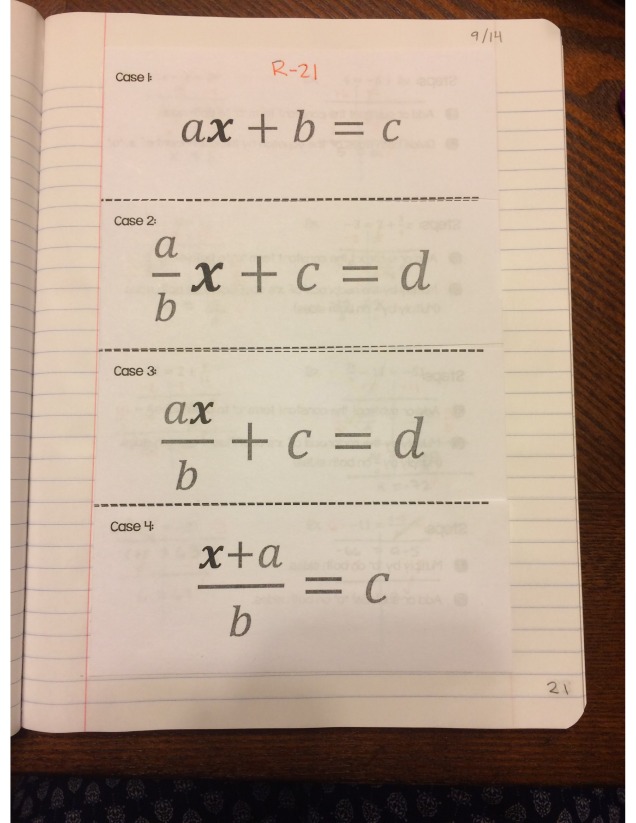

Day 7:
Recap warm-up over solving equations. 
Day 8: Review
Day 9: Test!
Want the full unit? Get it here!

One thought on “Algebra 1 – Unit 1 INB Pages | The Foundations of Algebra”